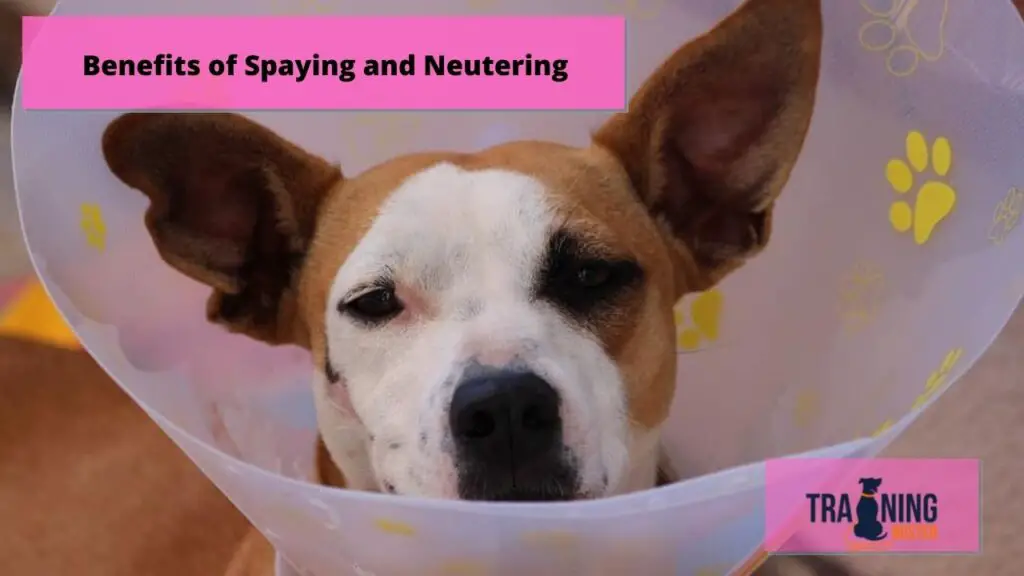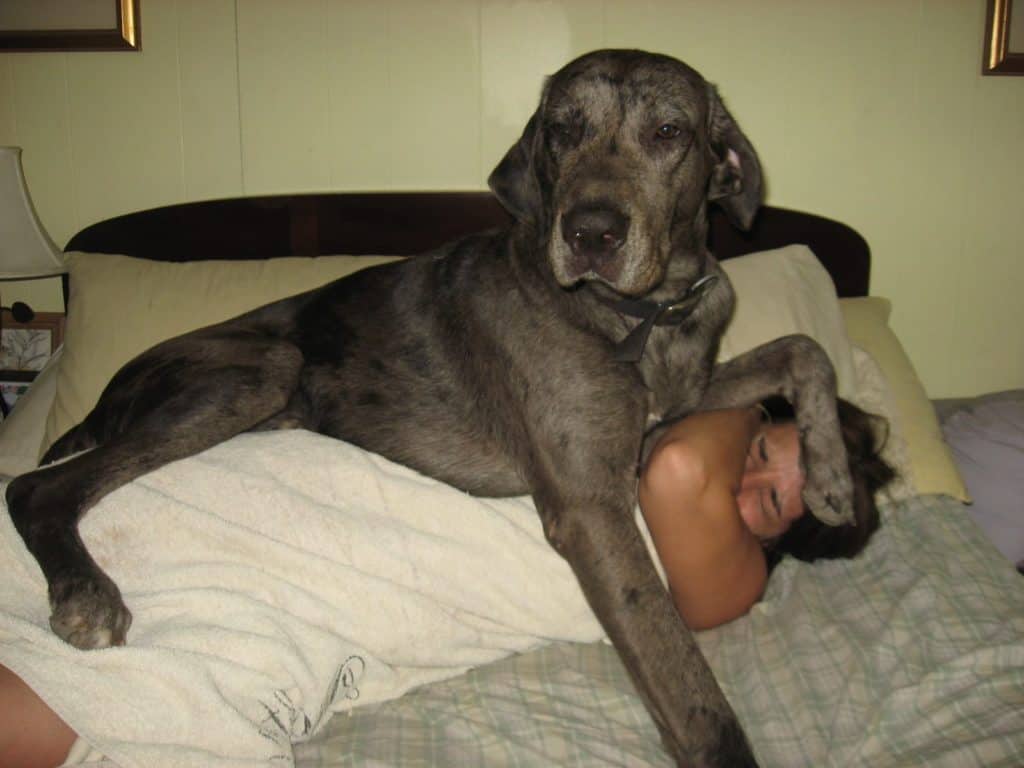
Learn what the benefits of spaying and neutering are in this article.
The quick answer is:
Spaying or neutering is a no-brainer for most pet owners – they get that their pet will be healthier, live longer, be easier to care for, and have fewer behavior issues
By spaying or neutering your pet, you’ll help control the pet homelessness crisis, which results in millions of healthy dogs and cats being euthanized in the United States each year simply because there aren’t enough homes to go around. There are also medical and behavioral benefits to spaying (female pets) and neutering (male pets) your animals.
Whether you’ve recently adopted a pet or you’re considering it, one of the most important health decisions you’ll make is to spay or neuter your cat or dog.
Spaying-removing the ovaries and uterus of a female pet is a veterinary procedure that requires minimal hospitalization and offers lifelong health benefits.
Neutering-removing the testicles of your male dog or cat-will vastly improve your pet’s behavior and keep him close to home. Many states and counties have established low-cost spay/neuter programs that make surgery easily affordable and accessible.
Spaying or neutering is a no-brainer for most pet owners – they get that their pet will be healthier, live longer, be easier to care for, and have fewer behavior issues.
They know the best time for their pet to get spayed or neutered is before a year old. We recommend four months of age because the surgery is safer and it prevents any chance of accidental litter.
What are spaying and neutering?
Spaying is the surgery for females and it removes the animal’s uterus. Neutering is surgery for males and it removes the animal’s testicles.
Why should I spay or neuter my pet?
Spaying or neutering your pet is one of the most important decisions you can make for your pet’s health. Not only does this procedure prevent them from reproducing and creating unwanted litters of offspring, but it also helps increase your pet’s life expectancy.
This surgery can increase your dog’s life expectancy by one to three years and your cat’s life expectancy by three to five years.
Benefits of spaying and neutering
Health and safety benefits
- Increases life expectancy. Spaying or neutering your dog will increase life expectancy by one to three years. It will increase your cat’s life expectancy by three to five years. Spaying helps prevent uterine infections and breast cancer, which is fatal in about 50 percent of dogs and 90 percent of cats. Spaying your pet before her first heat offers the best protection from these diseases.
- Reduces or eliminates the risk for mammary gland tumors, ovarian cancer and uterine cancer in females, especially if spayed before the first heat cycle.
- It eliminates the risk of testicular cancer and reduces the risk of prostate disease in males.
- Reduces desire to roam, improving safety by reducing injury from fights or auto accidents. Male dogs can smell females in heat up to five miles away. Statistics show that as many as 85% of dogs hit by cars are unaltered. An intact male will do just about anything to find a mate! That includes digging his way under the fence and making like Houdini to escape from the house. And once he’s free to roam, he risks injury in traffic and fights with other males.
- Reduces overall health issues, which is good for your pet and also lowers his medical costs. The cost of your pet’s spay/neuter surgery is a lot less than the cost of having and caring for a litter. It also beats the cost of treatment when your unneutered tom escapes and gets into fights with the neighborhood stray!
Behavioral benefits
- Makes for a better family pet. Pets who are spayed or neutered are easier to train and more focused on their family. Neutered cats and dogs focus their attention on their human families. On the other hand, unneutered dogs and cats may mark their territory by spraying strong-smelling urine all over the house. Many aggression problems can be avoided by early neutering.
- It decreases aggressive behavior and creates a safer community. Dog bites are the second most common reason for children’s emergency room visits. Unneutered male dogs are 18 times more likely to bite; unsprayed females are 10 times more likely to bite. Stray animals pose a real problem in many parts of the country. They can prey on wildlife, cause car accidents, damage the local fauna and frighten children. Spaying and neutering pack a powerful punch in reducing the number of animals on the streets.
- Reduces or eliminates spraying and marking by males. Unneutered dogs and cats are more likely to mark their territory by spraying strong-smelling urine all over the house. Your dog might be less likely to mount other dogs, people, and inanimate objects after he’s neutered. Some aggression problems may be avoided by early neutering.
- Eliminates messy heat cycles for females. While cycles can vary, female felines usually go into heat four to five days every three weeks during the breeding season. In an effort to advertise for mates, they’ll yowl and urinate more frequently-sometimes all over the house!
Societal benefits
In addition to the many benefits for your pet’s health, safety, and behavior, spay/neuter prevents unwanted dogs and cats from being born.
Every year, as many as 4 million homeless cats and dogs are killed in shelters because there are simply too many of them.
- Cats are able to produce 45 times as many offspring as humans. They can get pregnant every 62 days and usually give birth to multiple kittens per litter.
- Dogs are able to produce 15 times as many offspring as humans.
By spaying or neutering your pet, you are not adding to the number of unwanted pets who are killed. You can feel good knowing you’ve helped your pet be healthier and better behaved and done your part to help all animals. Every year, millions of cats and dogs of all ages and breeds are euthanized or suffer as strays.
These high numbers are the result of unplanned litter that could have been prevented by spaying or neutering.
Debunking Spay/neuter myths and misconceptions
- Spaying or neutering will not cause your pet to become overweight. Lack of exercise and overfeeding will cause your pet to pack on the extra pounds—not neutering. Your pet will remain fit and trim as long as you continue to provide exercise and monitor her food intake.
- Neutering is not a quick fix for all behavior problems. Although neutering your pet often reduces undesirable behaviors caused by a higher level of testosterone, there’s no guarantee that your dog’s behavior will change after he’s neutered. Although the surgery will reduce the amount of testosterone in your dog’s system, it won’t eliminate the hormone completely. Neutering will also not reduce behaviors that your pet has earned or that have become habitual. The effects of neutering are largely dependent on your dog’s individual personality, physiology, and history.
When to spay or neuter your pet
- For dogs: While the traditional age for neutering is six to nine months, puppies as young as eight weeks old can be neutered as long as they’re healthy. Dogs can be neutered as adults as well, although there’s a slightly higher risk of post-operative complications in older dogs, dogs that are overweight or dogs that have health problems.
- For cats: It is generally considered safe for kittens as young as eight weeks old to be spayed or neutered. In animal shelters, surgery is often performed at this time so that kittens can be sterilized prior to adoption. In an effort to avoid the start of urine spraying and eliminate the chance for pregnancy, it’s advisable to schedule the surgery before your own cat reaches five months of age. It’s possible to spay a female cat while she’s in heat.
Talk to your veterinarian to determine the best time to spay or neuter your pet.
Helping your pet before and after surgery
Your veterinary clinic will provide pre-surgical advice that you should follow. In general, avoid giving your cat any food after midnight the night before surgery.
A puppy or kitten, however, needs adequate nutrition, and your veterinarian may advise that food not be withheld.
Your veterinarian can also provide post-operative instructions for you to follow.
Although your pet may experience some discomfort after surgery, your veterinarian can take various measures to control pain. Depending on the procedure performed, medication for pain may be sent home with your pet.
Here are tips for a safe and comfortable recovery:
- Provide your pet with a quiet place to recover indoors and away from other animals.
- Prevent your pet from running and jumping for up to two weeks following surgery, or as long as your veterinarian recommends.
- Prevent your pet from licking the incision site, which may cause infection, by distracting your pet with treats or by using an Elizabethan collar.
- Avoid bathing your pet for at least ten days after surgery.
- Check the incision site daily to confirm proper healing.
If you notice any redness, swelling, or discharge at the surgery site, or if the incision is open, please contact your veterinarian.
Also, call your veterinarian if your pet is lethargic, has a decreased appetite, is vomiting or has diarrhea or any other concerns following surgery.
Related questions
I am thinking of adopting a puppy. Is spaying/neutering something I should seriously consider to be essential?
Spaying or neutering your pup means fewer dogs being euthanized and also fewer unwanted animals roaming our streets. Strays are more likely to cause trouble, such as destroying property, causing car accidents, and scaring (or even biting) children and adults.
Issues like these can negatively influence an entire community’s opinion about dogs, even though it’s only a few strays causing the problem. If we can ensure that every dog has a responsible Pack Leader to care for it, we’ll be more likely to see the support and positive changes in our communities for our pups!
I have a female pup who hasn’t been spayed yet. Should I get her spayed?
Spaying can help to prevent your female dog from having many serious health problems, such as uterine infections and breast cancer. Breast cancer is particularly dangerous, resulting in death for about 50% of canine cases. The most effective way to provide this protection is to ensure your dog is spayed before her first heat.


